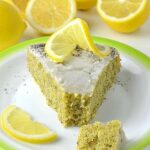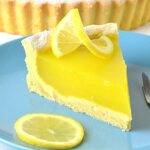Designing an outdoor kitchen is more than just creating an area for parties and other social gatherings. It also has to be functional, and the countertops can make or break the space. From slate to granite to concrete, the choices are seemingly endless. Which materials are best for outdoor cooking? Consider the following factors.
Budget
When building an outdoor kitchen, price should be a factor. After all, no two homeowners have the same amount of discretionary income. Luckily, there are outdoor kitchen materials to fit every budget.
If money isn’t an object, opt for countertops that are both durable and luxe. Granite is one of the most popular materials, but expect to pay around $100 per square foot for granite countertops. Is money tight? It’s still possible to design a kitchen that will stand the test of time. Consider installing tile countertops. Depending on the size, style, and pattern, it’s possible to buy tiles for $10 to $30 per square foot.
Climate
How’s the weather? Those who live in the southern part of the country experience completely different weather patterns than those up north. When picking countertops, the local climate should be a top consideration. Not all countertop materials fare well in every environment. For example, tile often cracks in freezing temperatures, and concrete might fade in the sun.
Slate and soapstone are great options for most climates. However, these natural stones absorb heat and may become hot to the touch on a sunny day. Those looking for a cool-touch material should consider glass countertops. Worried about frigid winters? Granite and marble can withstand sudden temperature changes. No matter the weather, wood is never ideal for outdoor kitchens, as it tends to warp over time when exposed to the elements.
Maintenance
Cleaning up after a big cookout isn’t always fun, but it’s necessary. Depending on the material, outdoor kitchen countertops can make this task easier or harder. Some materials show every spill, while others are a breeze to wipe down. That’s why homeowners should consider how much they want to deal with maintenance.
Although beautiful, marble and quartzite are porous and likely to stain. Spilling a glass of red wine or tomato sauce might leave a noticeable, hard-to-remove stain. Granite is also porous, but sealing it will prevent staining. Those looking for something that requires less maintenance should choose a material that’s non-porous, such as porcelain or glass. Wiping spills off these countertops is a breeze.
Appearance
An outdoor kitchen should reflect the homeowner’s personality. Those who like a modern look should opt for monochromatic hues and clean lines. Someone who is more eclectic should consider vibrant colors and bold patterns. That’s why countertops come in a variety of colors and textures.
Natural stones are ideal for creating an outdoor kitchen that is an extension of Mother Nature. Slate and soapstone have an earthy look. The natural veining in marble and granite adds visual interest. Tile countertops are ideal when designing a colorful kitchen. Homeowners can even mix and match tiles for a truly custom feel.
Enjoy Years of Outdoor Entertainment
Installing an outdoor kitchen creates an ideal space for entertaining. It also adds value to a home. However, no two kitchens should be the same, and a great design starts with the right countertops. Taking the time to weigh the pros and cons of each material will ensure you build an outdoor kitchen that will serve family members and guests for years to come.




Leave a Reply